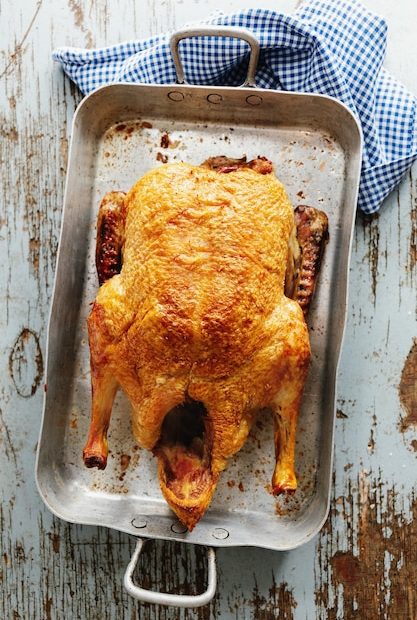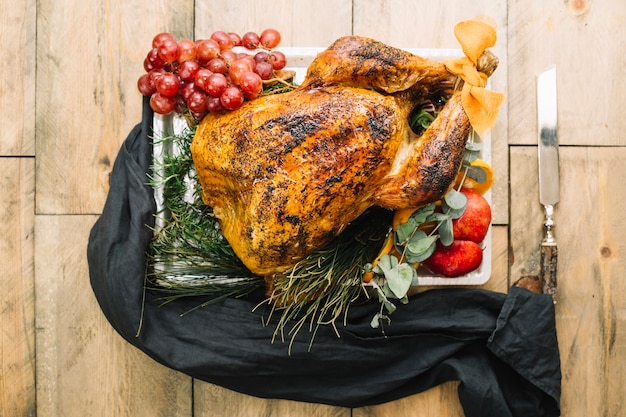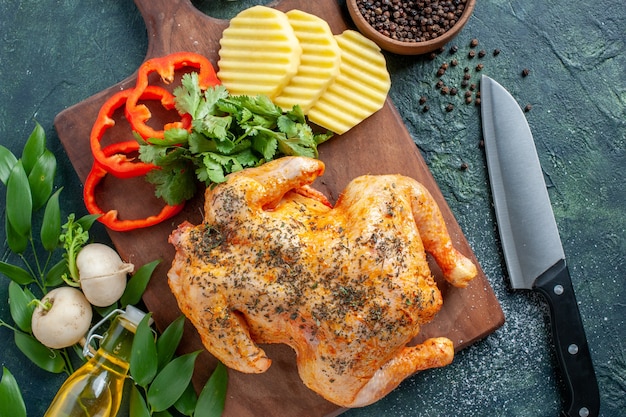Can you tell if your chickens have salmonella?
Salmonella is a common bacterial infection that can affect both humans and animals, including chickens. While it may be challenging to determine if your chickens have salmonella just by looking at them, there are some signs and precautions you can take to minimize the risk of infection.
Understanding Salmonella
Salmonella is a type of bacteria that can cause illness in both animals and humans. Chickens can carry certain strains of salmonella in their gut without showing any symptoms. These bacteria can contaminate the eggs laid by infected chickens, which is one of the primary routes of transmission to humans.
Signs of Salmonella in Chickens
While it may be difficult to detect salmonella in chickens without laboratory testing, infected birds may exhibit some symptoms such as:
- Diarrhea
- Lethargy
- Fluffed-up feathers
- Loss of appetite
- Weight loss
If you notice any of these signs in your flock, it is crucial to take precautionary measures to prevent the spread of infection.
Preventing Salmonella in Chickens
Taking proper hygiene measures and maintaining clean living conditions for your chickens can significantly reduce the risk of salmonella infection. Here are some steps you can take:
- Practice good hand hygiene: Wash your hands thoroughly with soap and water before and after handling chickens or their eggs.
- Regularly clean chicken coops: Remove droppings and soiled bedding regularly to minimize bacterial contamination.
- Separate sick chickens: If you suspect a chicken is sick, isolate it from the rest of the flock to prevent the spread of infection.
- Properly cook eggs: Cook eggs thoroughly to kill any potential bacteria, especially if they come from backyard flocks.
Testing for Salmonella
If you suspect that your chickens may be infected with salmonella, it is recommended to contact a veterinarian or local agricultural extension office for guidance. They can advise you on appropriate testing methods, which may include fecal or blood samples.
Did You Know? According to the Centers for Disease Control and Prevention (CDC), salmonella causes an estimated 1.35 million infections, 26,500 hospitalizations, and 420 deaths in the United States each year.
What does salmonella look like on chicken?
Salmonella is a type of bacteria that can cause food poisoning. It is commonly associated with poultry products, particularly chicken. While it may not be possible to visually identify salmonella on chicken, there are certain signs to watch out for that indicate the presence of this harmful bacteria.
1. Foul Odor
One of the first signs of Salmonella contamination in chicken is a foul or off-putting smell. If the chicken has a pungent or unpleasant odor, it is advisable to discard it immediately, as this could be an indication of bacterial growth.
2. Abnormal Color
Fresh chicken typically has a pinkish hue, but if you notice any discoloration such as green or gray patches, it could be a sign of bacterial contamination. It is important not to consume chicken with unusual colors as it may pose a health risk.
3. Changes in Texture
Salmonella-infected chicken may have a slimy or sticky texture. If the chicken feels unusually slippery or slimy to the touch, it is best to avoid consuming it.
It is important to note that not all contaminated chicken will display visual signs of salmonella. Therefore, it is crucial to follow proper food safety practices when handling and preparing chicken to minimize the risk of foodborne illnesses.
“Salmonella is responsible for one of the most common types of food poisoning worldwide.”
To prevent salmonella infection, it is essential to cook chicken thoroughly, reaching an internal temperature of at least 165°F (74°C). Using a food thermometer to check the temperature is highly recommended.
Here is a quick reference table on safe cooking temperatures for various poultry products:
| Poultry Product | Safe Internal Temperature |
|---|---|
| Whole Chicken | 165°F (74°C) |
| Chicken Breast | 165°F (74°C) |
| Chicken Thighs/Legs/Wings | 165°F (74°C) |
Remember, practicing good hygiene by washing your hands and utensils thoroughly after handling raw chicken can also help prevent the spread of salmonella.
In conclusion, while salmonella may not have a visible appearance on chicken, being aware of the warning signs such as foul odors, abnormal colors, and texture changes can help you identify potentially contaminated chicken. Always prioritize food safety and proper cooking techniques to reduce the risk of food poisoning.
Do you have to cut the white stuff off chicken?
When preparing chicken, you might come across a white substance known as chicken slime or chicken skin. This slimy layer can be found on both raw and cooked chicken, and it is natural for it to be present. However, many people wonder if they need to remove this white stuff before cooking or consuming chicken. Let’s take a closer look at whether it is necessary to cut off the white stuff off chicken.
The chicken slime, what is it?
The white substance on chicken is called “purge” or “chicken slime.” It is a combination of water and protein that is released from the meat during the freezing process. The slime is not harmful and can be safely consumed. Removing it is a matter of personal preference rather than a safety concern.
Is it necessary to remove chicken slime?
No, it is not necessary to remove the white stuff from chicken. The slime does not affect the taste or texture of the meat. However, some people choose to remove it due to its appearance or personal preference. If you decide to remove the slime, simply rinse the chicken under cold water and pat it dry with a paper towel.
Tips for handling chicken slime
- Wash your hands: Remember to wash your hands thoroughly after handling raw chicken to prevent cross-contamination.
- Use separate utensils: Use different utensils and cutting boards for raw and cooked chicken to avoid spreading bacteria.
- Cook chicken thoroughly: Ensure that chicken is cooked to an internal temperature of 165°F (74°C) to kill any bacteria that may be present.
“The white stuff on chicken is safe to eat, but if you prefer to remove it for aesthetic reasons, feel free to do so.” – Food Safety Expert
In conclusion, while the white stuff on chicken is harmless, it is not necessary to remove it. It does not impact the taste or safety of the meat. However, if you find it unappealing, you can easily rinse it off before cooking. Remember to follow proper food handling and cooking practices to ensure the safety of your chicken.
Is it OK to eat slightly pink chicken?
When it comes to cooking chicken, it’s important to ensure that it is cooked thoroughly to eliminate any potential harmful bacteria. However, there is a common misconception about whether it is safe to consume slightly pink chicken.
Understanding Chicken Doneness
Chicken is considered safe to eat when it reaches an internal temperature of 75°C (165°F). This ensures that any bacteria, such as Salmonella, is killed off. While many people believe that the color of the meat indicates its doneness, this is not always the case.
It is possible for properly cooked chicken to have a slight pink hue, especially in areas where the meat is close to the bone. The pinkness can be caused by naturally occurring compounds in the meat, such as myoglobin. To determine if the chicken is fully cooked, it is best to use a meat thermometer to check the internal temperature.
Importance of Proper Cooking
Cooking chicken thoroughly is crucial for food safety. Consuming undercooked chicken can lead to foodborne illnesses, which can cause symptoms like nausea, vomiting, diarrhea, and abdominal pain.
Undercooked chicken can contain harmful bacteria that may not be killed even if the meat appears lightly pink. It’s essential to develop good cooking habits, such as using a meat thermometer, to ensure chicken is cooked to a safe temperature.
Tips for Safe Chicken Consumption
- Cook chicken until it reaches an internal temperature of 75°C (165°F) throughout the meat.
- Use a meat thermometer to accurately measure the internal temperature.
- Avoid cross-contamination by keeping raw chicken separate from other foods.
- Wash hands, utensils, and surfaces thoroughly after handling raw chicken.
- Store chicken at the appropriate temperature to prevent bacterial growth.
“It is always better to be safe than sorry when it comes to cooking chicken. Don’t rely on the color alone, use a meat thermometer to ensure it’s fully cooked.” – UK Food Standards Agency
Conclusion
While it may be challenging to determine if your chickens have salmonella based solely on visual observations, practicing good hygiene and taking preventive measures can reduce the risk of infection for both chickens and humans. If you suspect an infection, seeking professional guidance and testing can help confirm the presence of salmonella and ensure appropriate actions are taken to protect your flock and yourself.



